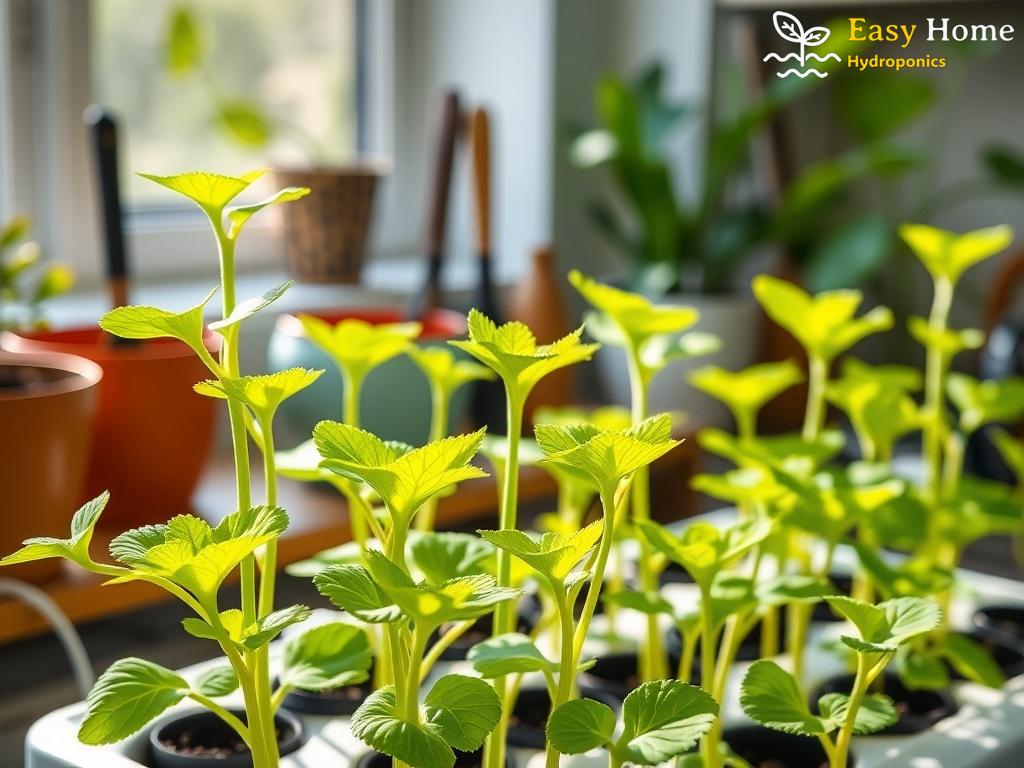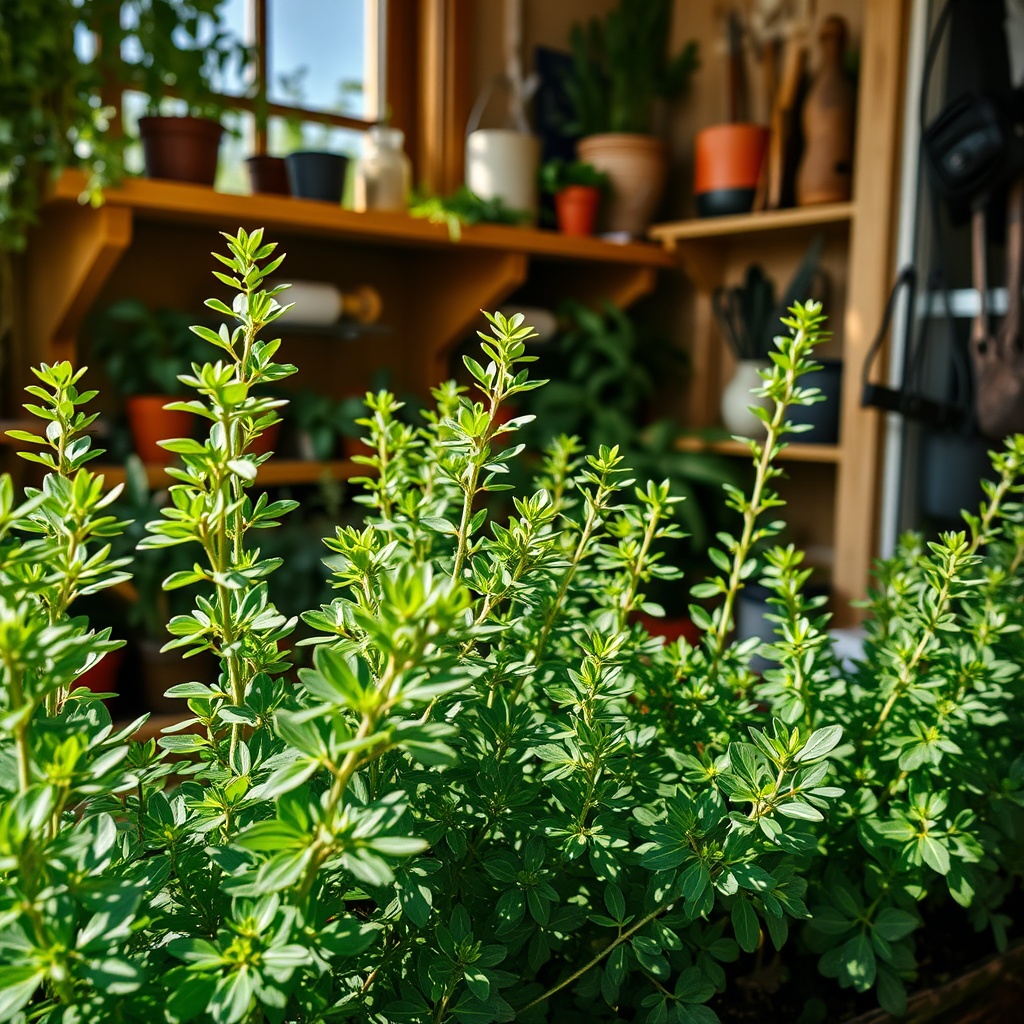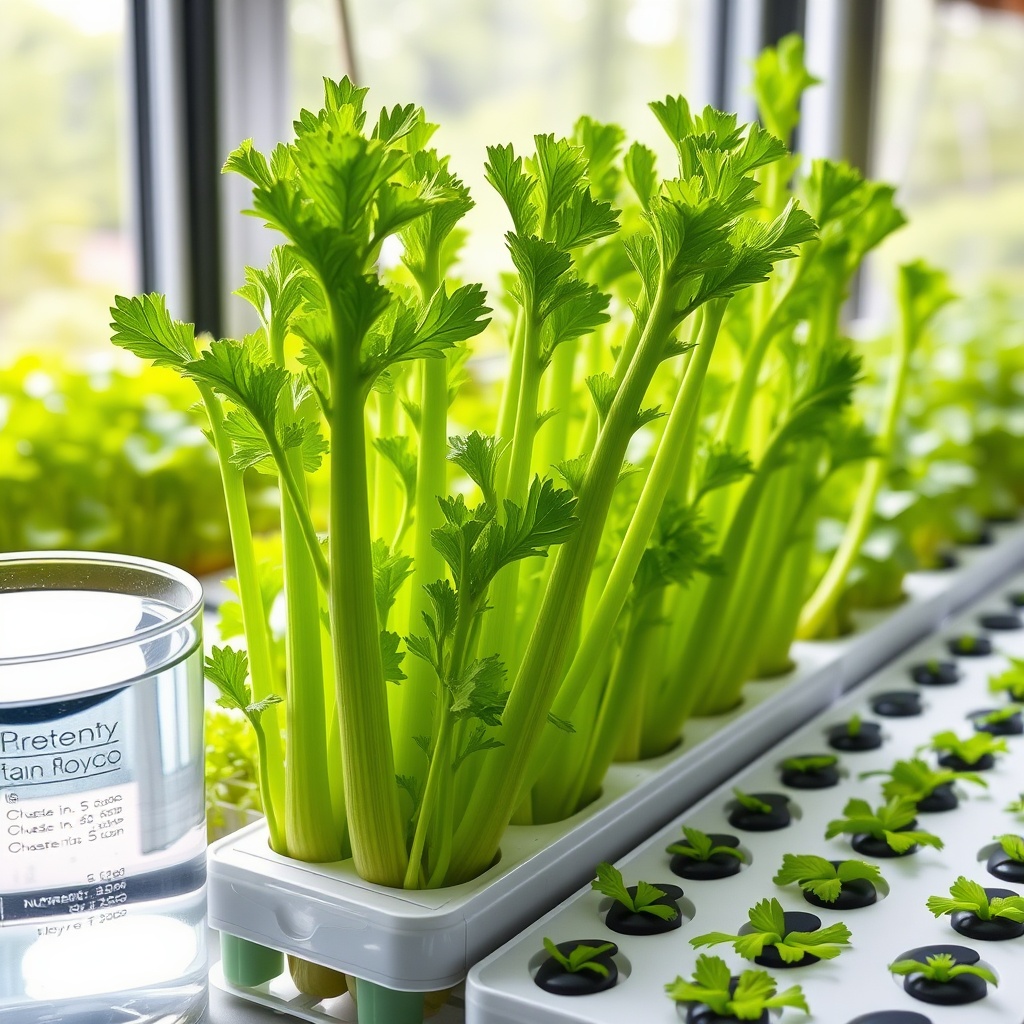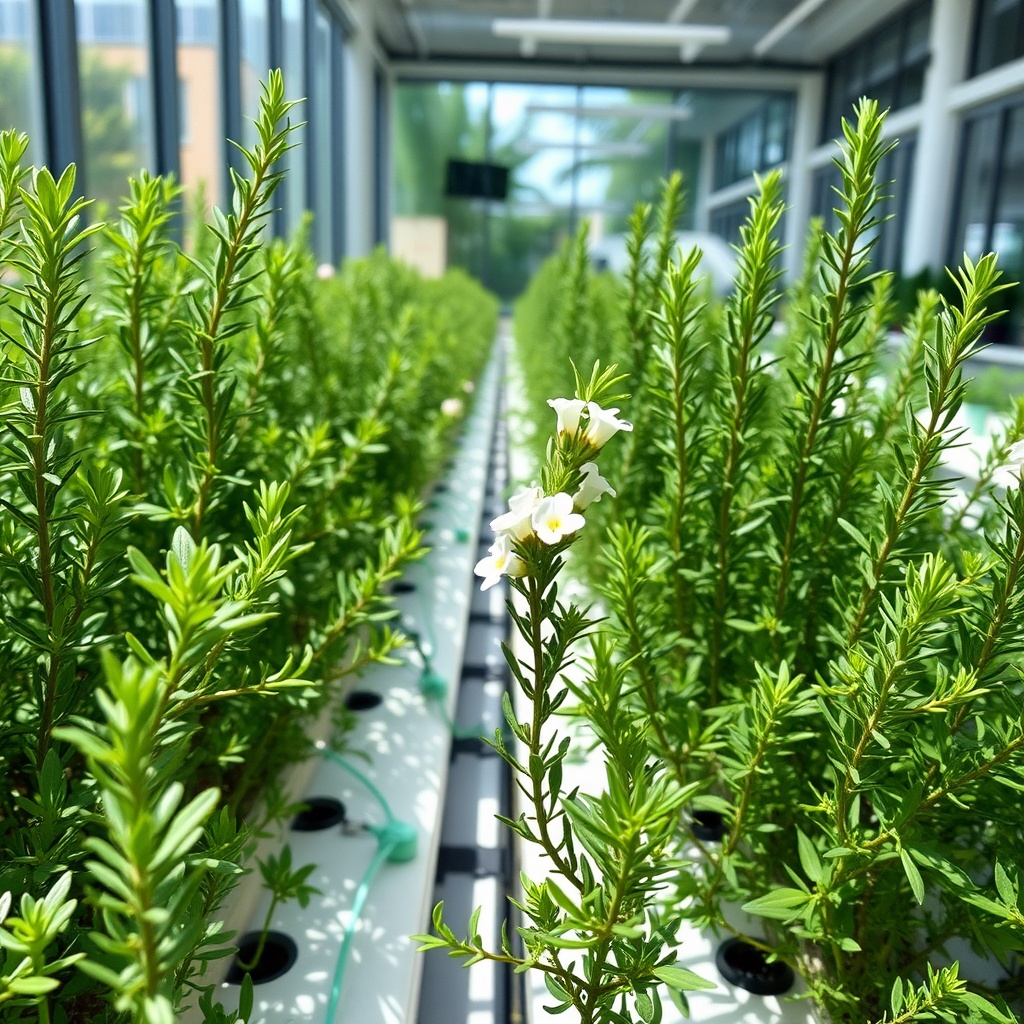The Hydroponic Advantage: Why Sunflower Shoots Shine
In an era where urban gardening is becoming a lifeline for health-conscious individuals, hydroponic sunflower shoots are emerging as a superstar in the world of microgreens. These delightful little greens not only provide a burst of flavor but also a plethora of nutritional benefits. But what exactly makes them stand out in the crowded field of hydroponics? Let’s dive into the hydroponic advantage and explore why sunflower shoots are stealing the spotlight.
Sunflower shoots are not just a pretty garnish; they are a nutritional powerhouse packed with vitamins and minerals. Grown hydroponically, they flourish without soil, absorbing essential nutrients directly from nutrient-rich water. This method of cultivation not only enhances their growth rate but also boosts their nutritional profile. Here’s a quick breakdown of what you can expect from these crunchy greens:
| Nutrient | Amount per 100g | Daily Value (%) |
|---|---|---|
| Vitamin E | 7.4 mg | 37% |
| Vitamin B6 | 0.4 mg | 20% |
| Magnesium | 79 mg | 20% |
| Iron | 1.5 mg | 8% |
With such an impressive nutritional profile, it’s no wonder that these shoots are gaining traction among health enthusiasts and chefs alike.
One of the most appealing aspects of growing hydroponic sunflower shoots is the minimal space they require. For urban dwellers or those with limited gardening space, these microgreens can be cultivated on windowsills or small balcony gardens without the need for extensive gardening infrastructure. Unlike traditional gardening, hydroponic systems can be compact and efficient, making it easy to grow your greens right at home.
Here are some key benefits of utilizing hydroponic systems for growing sunflower shoots:
- Speedy Growth: Hydroponic sunflower shoots can be harvested in as little as 7-10 days.
- Water Efficiency: Hydroponics uses 90% less water than conventional soil gardening.
- No Pesticides: Growing without soil reduces the risk of pests and diseases, resulting in cleaner greens.
Whether you’re a novice or a seasoned gardener, hydroponic sunflower shoots offer a rewarding gardening experience without the hassle of traditional methods. So why not give it a try and enjoy the fresh crunch of homegrown greens?
Setting Up Your Hydroponic System: A Beginner’s Guide
Embarking on your journey to grow hydroponic sunflower shoots is a thrilling venture, especially for those who want to cultivate vibrant greens without the constraints of traditional gardening. Understanding how to set up your hydroponic system effectively is crucial to reaping the rewards of this innovative gardening method. Let’s explore the essential components and steps needed to create your own hydroponic haven, ensuring that your sunflower shoots flourish in style.
When it comes to hydroponic gardening, the first step is selecting the system that best fits your space and lifestyle. There are various hydroponic setups, from simple ones like Deep Water Culture (DWC) to more complex systems like Nutrient Film Technique (NFT). For beginners, DWC is often recommended, as it is straightforward and allows roots to submerge directly in nutrient-rich water, promoting rapid growth.
Regardless of the system you choose, ensure it includes a water reservoir, net pots, and a pump for circulation. The beauty of hydroponics lies in its flexibility; you can customize your setup according to the space available, whether it’s a small balcony or a cozy kitchen.
Once you’ve selected your hydroponic system, the next step involves gathering the essential components. This includes nutrient solutions specifically formulated for hydroponic plants, which are crucial for delivering the necessary minerals directly to your sunflower shoots. These solutions can often be found at gardening centers or online.
Lighting is another critical aspect. If natural sunlight is limited, consider investing in grow lights. LED grow lights are energy-efficient and provide the spectrum of light necessary for optimal growth. As sunflower shoots thrive in bright conditions, ensuring they receive adequate light will enhance their taste and nutritional value.
As you set up your system, keep in mind the importance of water quality. Using filtered water can help prevent harmful chemicals from affecting your plants. Also, maintaining the right pH level (ideally between 5.5 and 6.5) will ensure nutrient absorption is maximized. A simple pH testing kit can help you monitor this easily.
| Component | Purpose |
|---|---|
| Water Reservoir | Holds nutrient-rich water for plant roots |
| Net Pots | Supports plant structure and allows roots to access water |
| Pump | Circulates water and nutrients |
| Nutrient Solution | Provides essential minerals for growth |
| Grow Lights | Supplemental lighting for optimal growth |
By carefully assembling these components, you’ll be on your way to creating a thriving environment for your hydroponic sunflower shoots. Remember, the setup may seem daunting at first, but once you establish your system, the rewards of fresh, crunchy greens are well worth the effort.
Nutritional Powerhouse: The Health Benefits of Sunflower Shoots
The allure of hydroponic sunflower shoots extends far beyond their delightful crunch and vibrant green hue. These microgreens are not only a culinary delight but also a nutritional powerhouse that can elevate your health to new heights. Their unique composition is tailored to provide essential vitamins and minerals that contribute to overall well-being. When consumed regularly, sunflower shoots can be a game-changer for anyone looking to enhance their diet.
Rich in antioxidants, sunflower shoots help combat oxidative stress in the body, which can lead to chronic diseases. The presence of Vitamin E, for example, plays a significant role in protecting cells from damage. But that’s just the tip of the iceberg—these tiny greens also pack a punch of Vitamin B6, which is crucial for energy metabolism, and a wealth of magnesium, essential for muscle function and relaxation.
When we compare sunflower shoots with other common microgreens, the advantages become abundantly clear. For instance, while many microgreens offer vitamins and minerals, sunflower shoots stand out due to their balanced profile of essential nutrients. A quick glance at a comparison table showcases their superiority:
| Nutrient | Sunflower Shoots (per 100g) | Broccoli Microgreens (per 100g) | Pea Shoots (per 100g) |
|---|---|---|---|
| Vitamin E | 7.4 mg | 0.78 mg | 0.5 mg |
| Vitamin B6 | 0.4 mg | 0.18 mg | 0.1 mg |
| Magnesium | 79 mg | 21 mg | 25 mg |
| Iron | 1.5 mg | 0.41 mg | 1.4 mg |
As illustrated, sunflower shoots not only bring diversity to your plate but also deliver a higher concentration of vital nutrients compared to their counterparts. This remarkable nutritional edge makes them an invaluable addition to any health-conscious diet.
Incorporating hydroponic sunflower shoots into your meals is a simple yet effective way to enhance your nutrient intake. Their mild, nutty flavor pairs well with salads, sandwiches, and smoothies, making it easy to enjoy their health benefits. Whether you toss them into a vibrant salad or blend them into your morning smoothie, sunflower shoots offer a delicious opportunity to nourish your body.
Moreover, their versatility ensures that you can enjoy them year-round, regardless of the season. Hydroponics allows for consistent growth, which means you can have access to these nutritional gems at your fingertips. With the rising interest in health and wellness, now is the perfect time to embrace the benefits of sunflower shoots and incorporate them into your sustainable lifestyle.
Harvesting and Storing: Maximizing Your Crunchy Greens
The moment you’ve been waiting for has arrived! After nurturing your hydroponic sunflower shoots and watching them grow into vibrant, green delicacies, it’s time to harvest. Understanding the best practices for harvesting and storing these crunchy greens is essential to ensure that you enjoy their full flavor and nutritional benefits. Here’s how to make the most of your delightful harvest.
Harvesting your sunflower shoots is an exciting and rewarding experience. It’s crucial to pick them at the right time to enjoy their tender crunch. Ideally, you should aim to harvest your shoots when they are about 7 to 10 days old, reaching a height of 2 to 4 inches. At this stage, they will have developed their unique flavor profile and nutrient density. Use sharp scissors or garden shears to snip the shoots just above the root base. This method will not only ensure a clean cut but will also promote regrowth if you leave a small portion of the plant intact. Remember, the fresher the greens, the more vibrant their taste!
Once you’ve harvested your sunflower shoots, proper storage is essential to maintain their crispness and nutritional value. Ideally, you should consume them shortly after cutting to relish their freshness. However, if you need to store them, place the shoots in a damp paper towel inside a breathable container or a perforated plastic bag. This method helps to retain moisture while allowing air circulation, which is critical in preventing spoilage. Keep your stored shoots in the refrigerator, where they can last for up to a week.
For those who want to enjoy sunflower shoots for an extended period, consider blanching them briefly before freezing. Quickly immerse the shoots in boiling water for about 30 seconds, then plunge them into ice water to halt the cooking process. Once cooled, drain them well, and transfer the shoots to an airtight freezer bag. This technique allows you to preserve their vibrant color and nutritional benefits, enabling you to add a crunchy burst of greens to your dishes even in the off-season.
By mastering the art of harvesting and storing, you not only enhance the longevity of your hydroponic sunflower shoots but also ensure that every bite remains a delightful experience. Embrace the journey from seed to table, and savor the joy of enjoying your homegrown greens!
Creative Culinary Uses: Elevating Dishes with Sunflower Shoots
As the trend of incorporating fresh greens into our diets continues to flourish, hydroponic sunflower shoots have emerged as a vibrant addition to culinary creations. Their unique flavor and appealing texture allow them to shine not just as a garnish but as a key ingredient in various dishes. Let’s explore how these crunchy greens can elevate your meals and add a delightful twist to traditional recipes.
Transforming Salads into Flavorful Masterpieces
Sunflower shoots have the power to take your salads from ordinary to extraordinary. Their mild, nutty flavor complements a variety of ingredients, making them a versatile choice for both green salads and grain bowls. Imagine tossing them into a fresh arugula salad adorned with cherry tomatoes, avocado, and a zesty lemon vinaigrette. The shoots not only enhance the dish’s visual appeal with their vibrant green hue but also add a satisfying crunch that elevates the texture. You can also experiment by layering them in a quinoa bowl with roasted vegetables and a tangy tahini dressing, providing a nutritious boost that’s both delicious and filling.
Adding a Nutritional Boost to Smoothies and Wraps
For those seeking innovative ways to integrate sunflower shoots into their diet, consider blending them into smoothies or incorporating them into wraps. Adding a handful of these nutritious greens to your morning smoothie can transform a simple drink into a nutrient-packed powerhouse. Pairing sunflower shoots with fruits like banana and mango, along with a splash of coconut water, creates a refreshing beverage that supports your health while tantalizing your taste buds. Alternatively, when crafting wraps, layer sunflower shoots with hummus, roasted red peppers, and shredded carrots for a satisfying meal that bursts with flavor. The shoots not only provide an appealing crunch but also infuse your wraps with essential vitamins and minerals.
Embracing Culinary Creativity with Sunflower Shoots
The culinary potential of hydroponic sunflower shoots extends beyond salads and smoothies. Chefs and home cooks alike are discovering the joy of incorporating these greens into various dishes, showcasing their versatility. Whether sprinkled atop a gourmet pizza, blended into a vibrant pesto, or even used as a topping for tacos, the possibilities are endless. Their delicate texture allows them to meld seamlessly with other ingredients, creating a harmonious balance that is both visually stunning and pleasing to the palate. With a little creativity, sunflower shoots can become a signature element in your culinary repertoire, offering a fresh and healthful twist that resonates with the rising enthusiasm for home-cooked meals.




